The Yunnanese ethnic diversity and character that old town Lijiang lacked, we found a few kilometers away in ancient Baisha village. Still a part of the Lijiang UNESCO World Heritage Site, Baisha is far enough removed that only a few tourists on bikes wander down its sleepy, dusty lanes. The Naxi first settled in Baisha centuries ago, well before Kublai Khan united the region with the rest of China in 1271, and it was the original home of the ruling Mu family before its move to nearby Lijiang. Today, Naxi women cheerfully sell vegetables on well-worn steps while locals pick up rice and other staples at the corner store. It is a living, breathing place, seemingly unchanged with the passing of time (and influx of tourists to the region).
Baisha’s two main streets are lined with an array of quiet shops that are decidedly less touristy than what we found in Lijiang. Local artisans can be seen hammering copper sheets into bowls and dying yards of traditional batik fabric left to dry in the sun. Hand-painted souvenir t-shirts feature Tibetan script and Dongba characters, the hieroglyphic Naxi language which also adorns a few of the walls. In one shop, we watched a man carefully inscribe a shirt with a Tibetan prayer for peace. A few clothing stores feature unique pieces such as linen dresses with embroidered trim and softly woven sets of cold-weather accessories suited for the mountain climate. Along the street, tables are covered with a mix of mass-produced items and antiques that look like they survived the Cultural Revolution buried in someone’s backyard.
We visited a school where Naxi girls learn the art of silk embroidery from masters, diligently working for weeks on a single piece. One master had been intricately embroidering a silk screen for several years, though we were told that, with her eyesight fading, there were concerns she wouldn’t be able to finish it. Another master created an embroidered painting of American President Obama and his family, which was presented to them as a gift by Chinese President Xi.
A girl with excellent English stepped away from her sewing to give us a tour of the workshop and explain its fascinating history. Embroidery was banned during the Cultural Revolution as an unnecessary luxury and the skills were nearly lost. Now the government gives money and supplies to the school in an effort to revive the traditional art. The students sell their signed works in the attached shop for 250 RMB (41 USD) each and purportedly get to keep the money. More exquisite pieces are also available, with some upward of thousands of U.S. dollars.
Baisha’s most famous resident is Dr. Ho Shixiu, an expert in Chinese herbal medicine who has been featured in media as varied as National Geographic and the BBC. The sprightly 93-year-old welcomed us into his office and proudly showed off his accolades. Dr. Ho told us that his family was very poor when he was young, so he grew up eating roots and vegetables instead of meat, attributing this to his long-standing good health (and also his lack of teeth). Dr. Ho’s philosophy is simple and he repeated it to us several times: “Optimism is the best medicine.” He also told us that we looked very healthy so no herbal prescriptions for us.
We stopped in the Impression Baisha Cafe for lunch and were very pleasantly surprised to find a menu featuring local Naxi specialties. This is exactly the type of place we had hoped to find in Lijiang but had eluded us until now. Tender, flavorful pieces of yak came sizzling on a hot iron plate playfully shaped like a bull. Stir-fried Naxi potatoes were tossed with chunks of tomato and spring onion in a savory, yet tangy sauce that brought to mind oyster sauce and vinegar. On the recommendation of another diner, we ordered the Naxi cheese, a delightful serving of breaded and fried slices yaks-milk cheese with sugar on the side for dipping. The salty/sweet combination was deeply satisfying. All this came with a small bucket of steamed rice and cost just 134 RMB (about 22 USD). Not bad for our best meal in Lijiang!
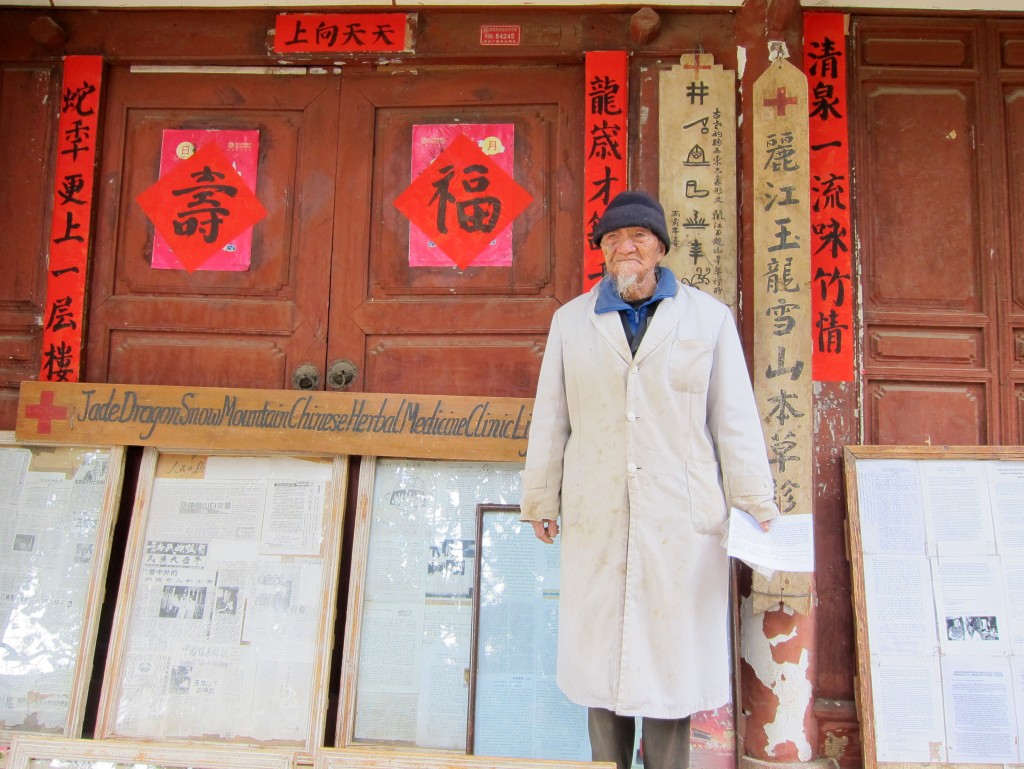
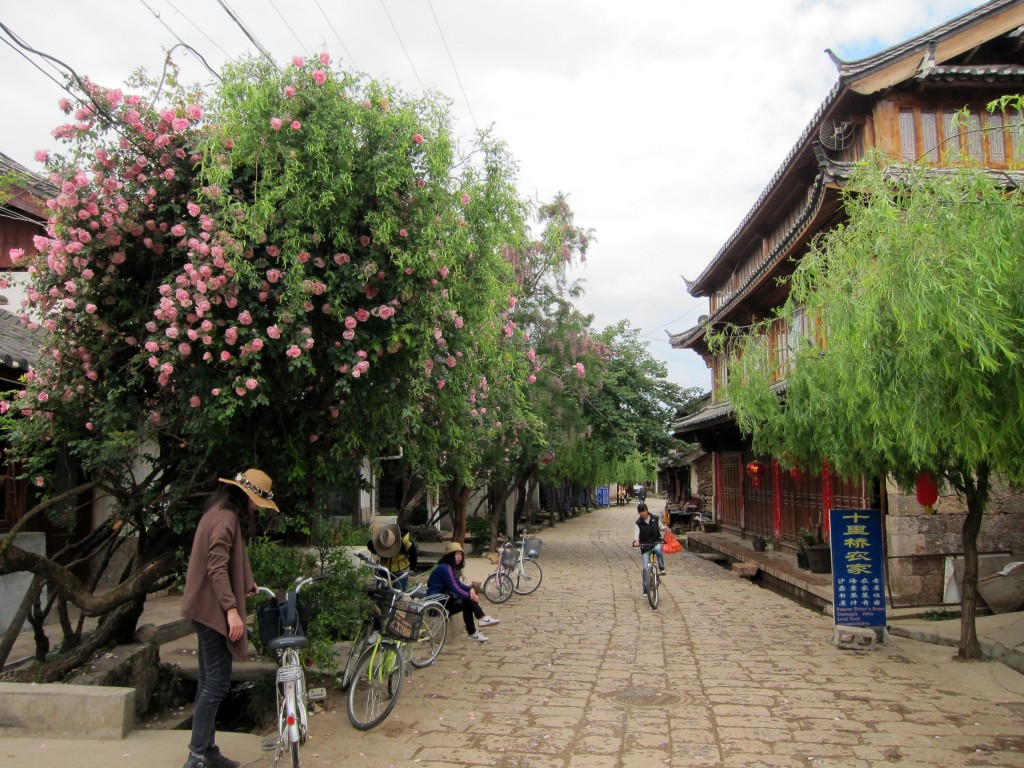
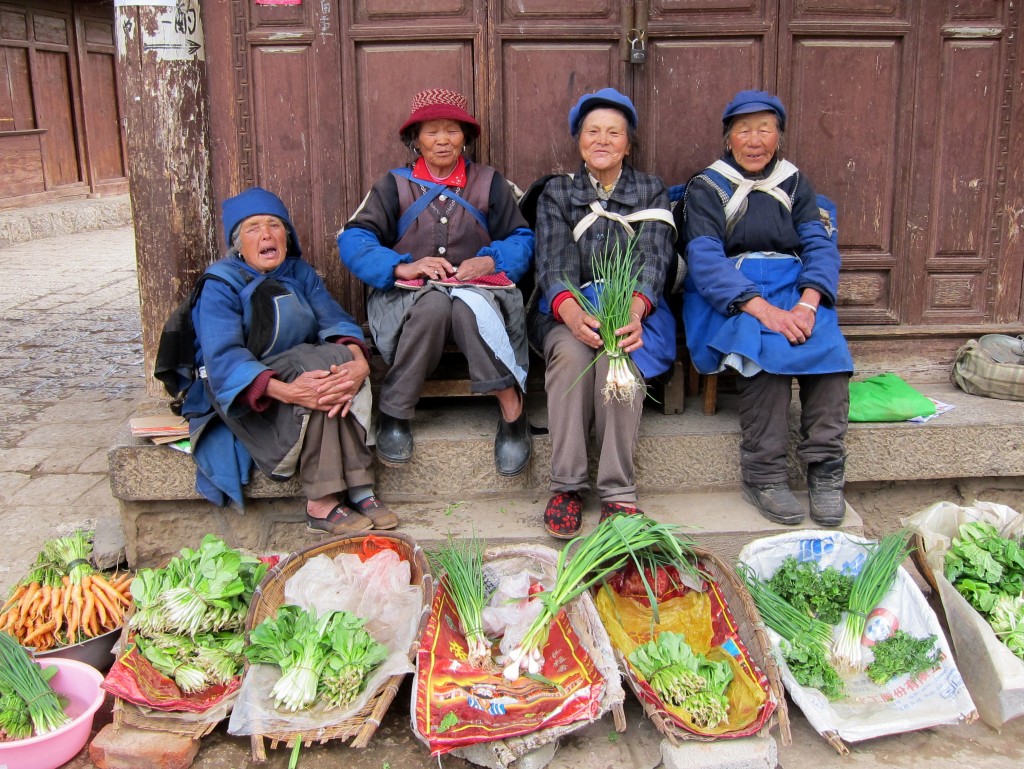
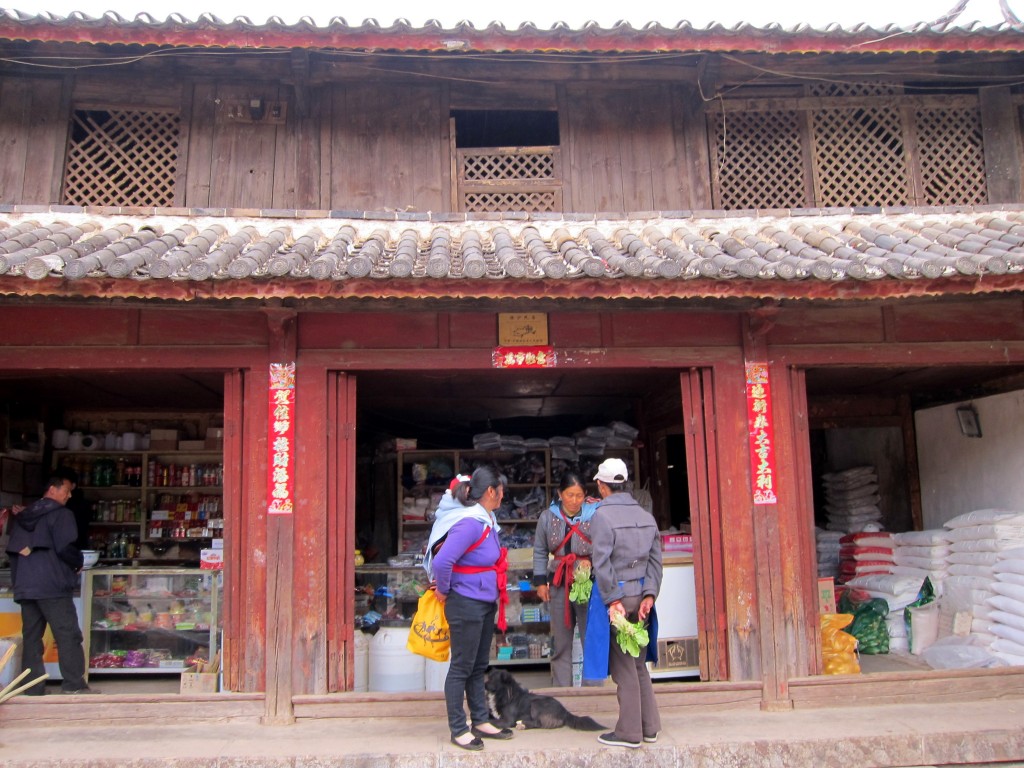
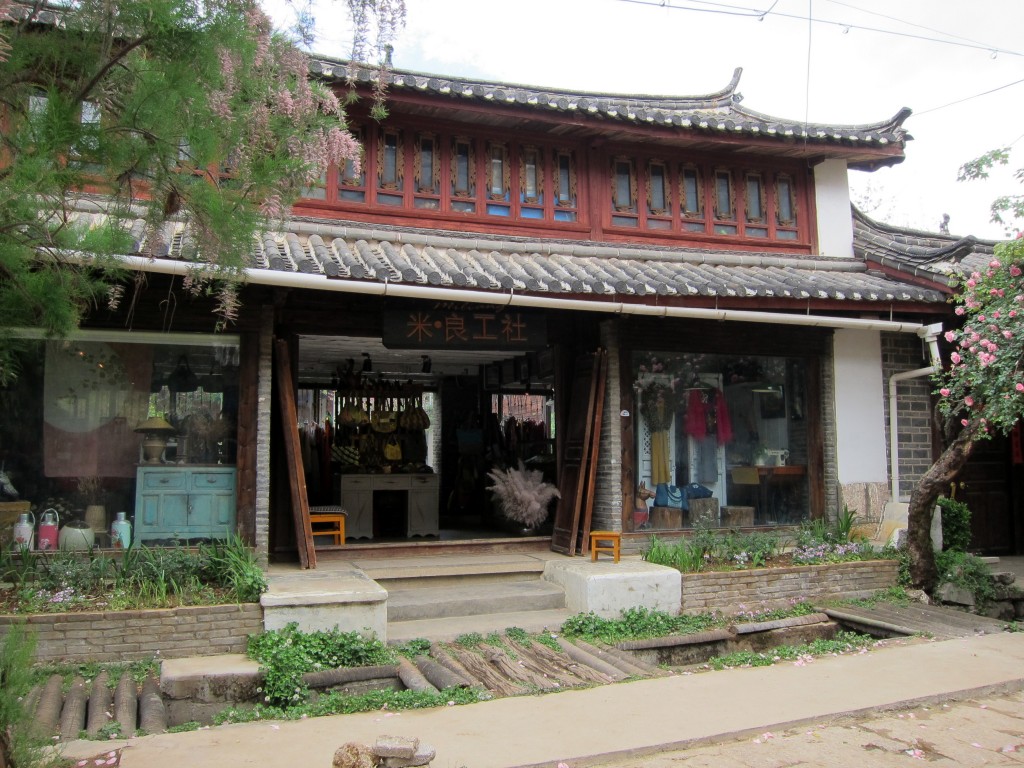
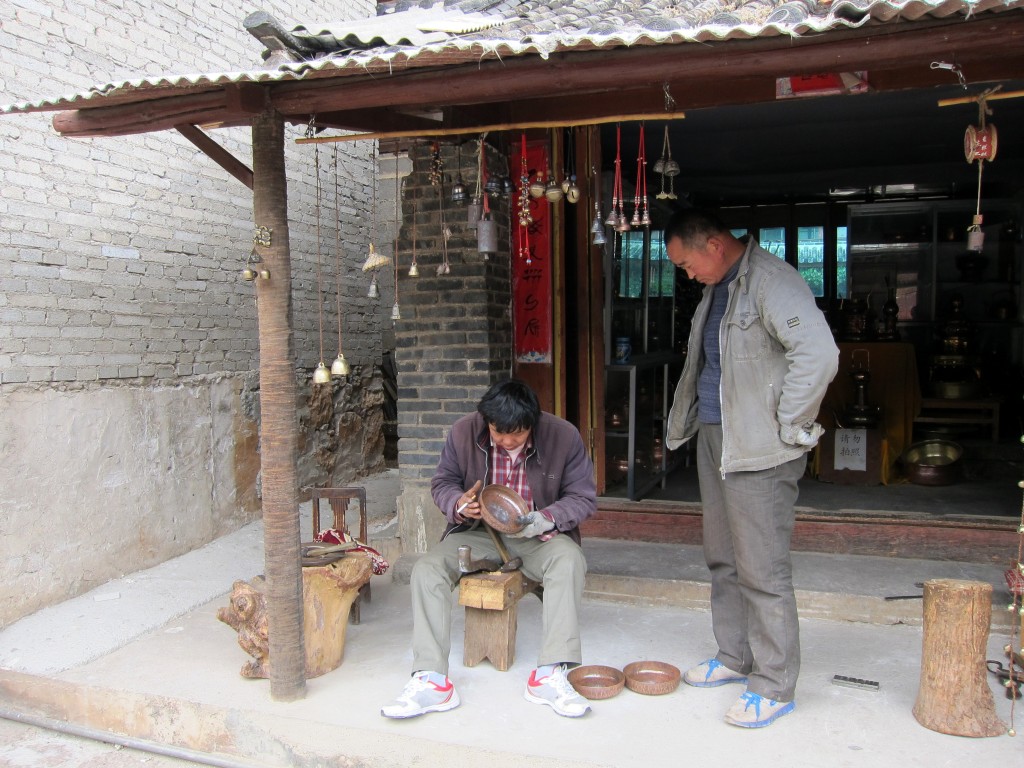
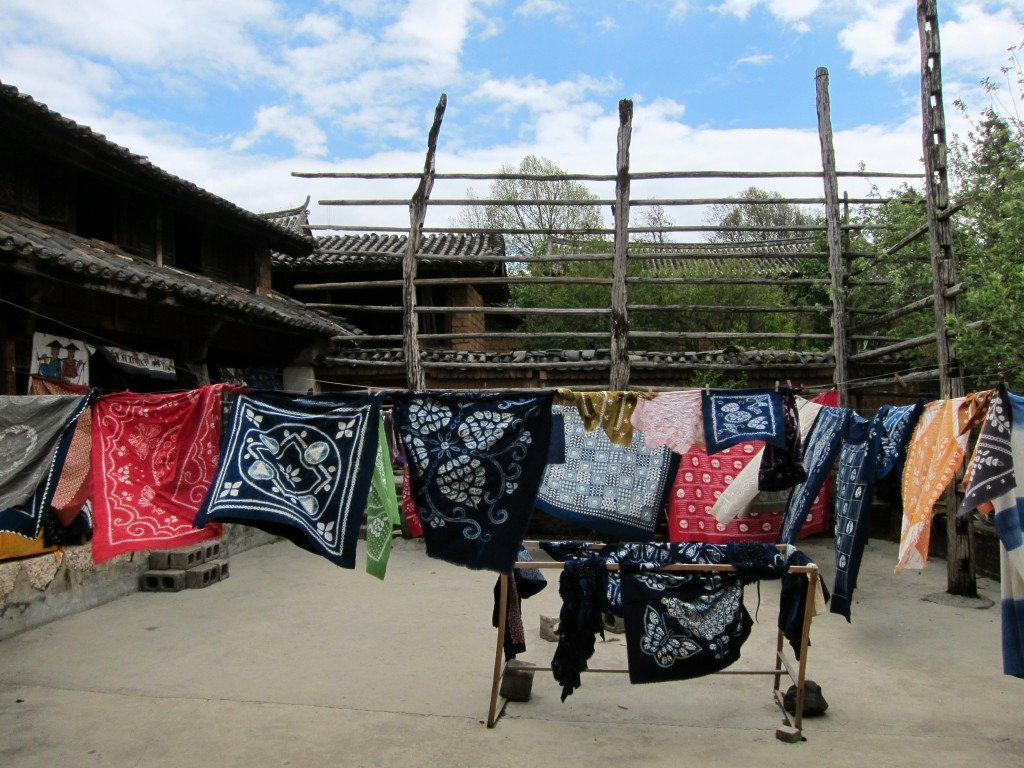
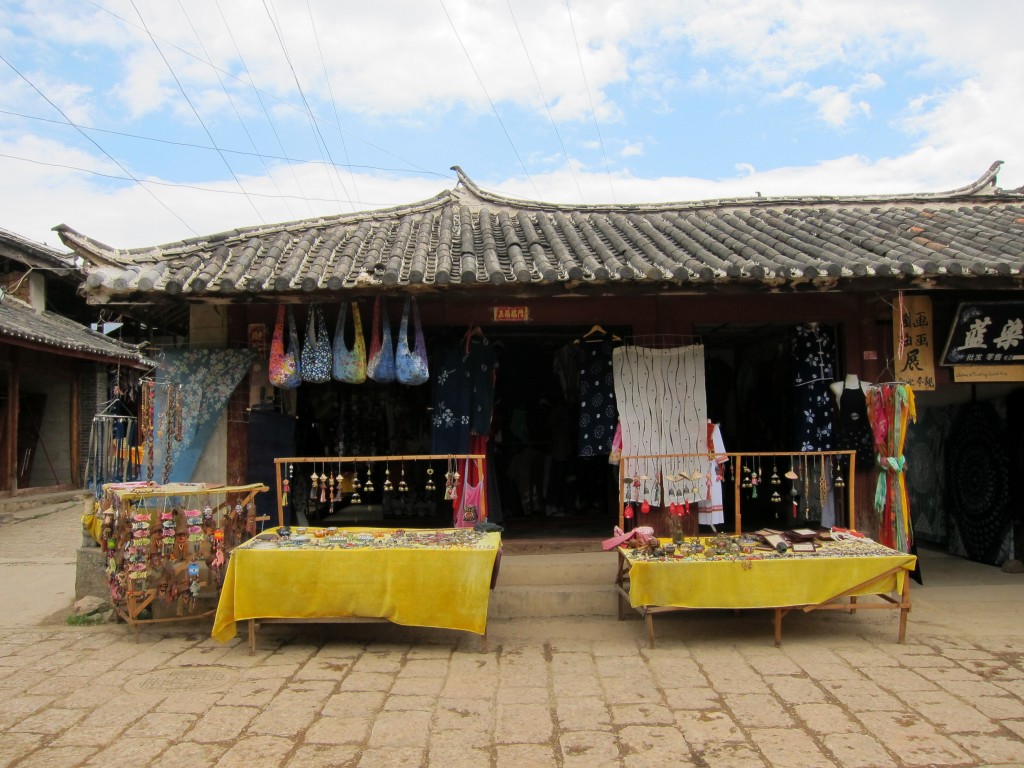
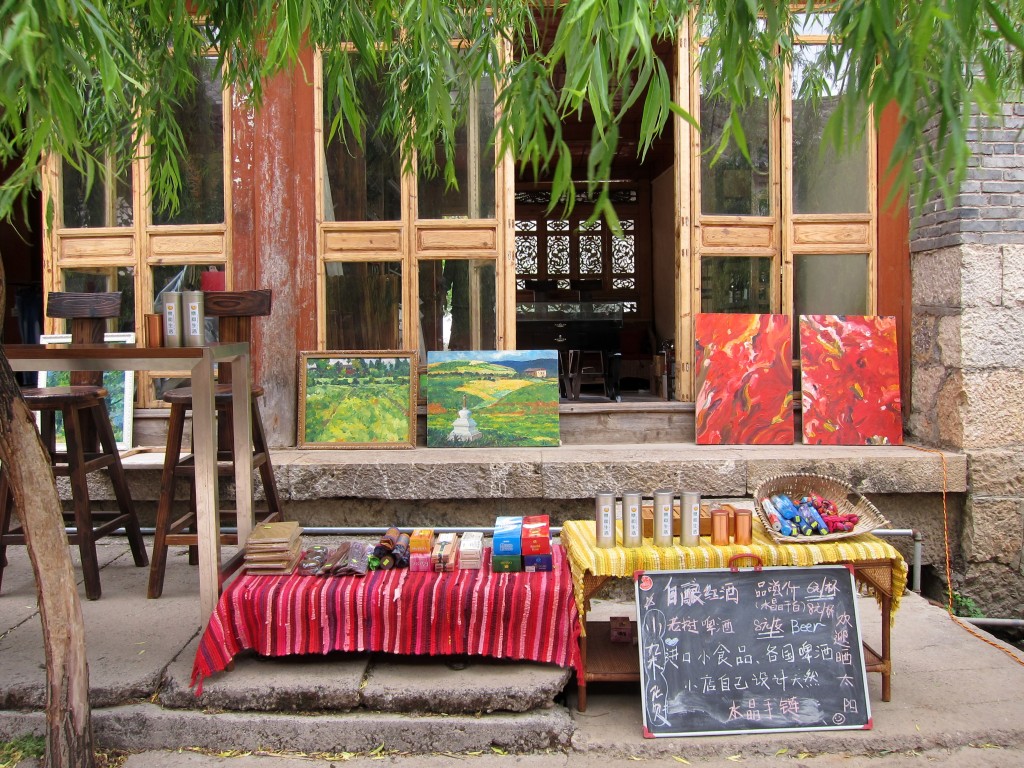
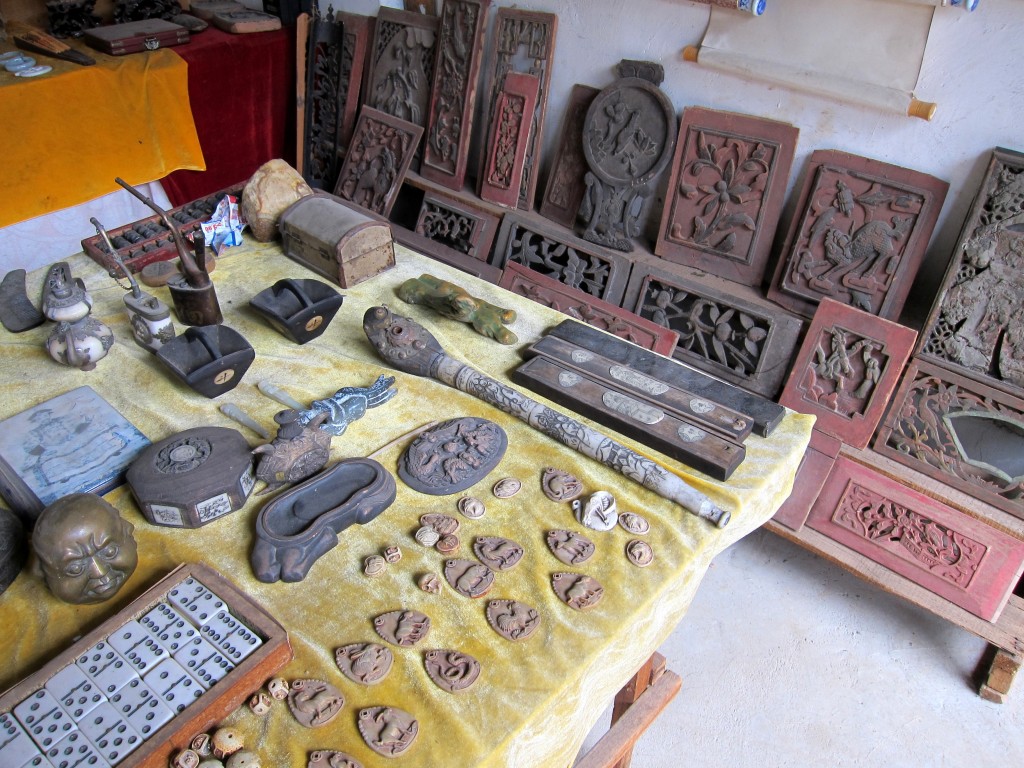
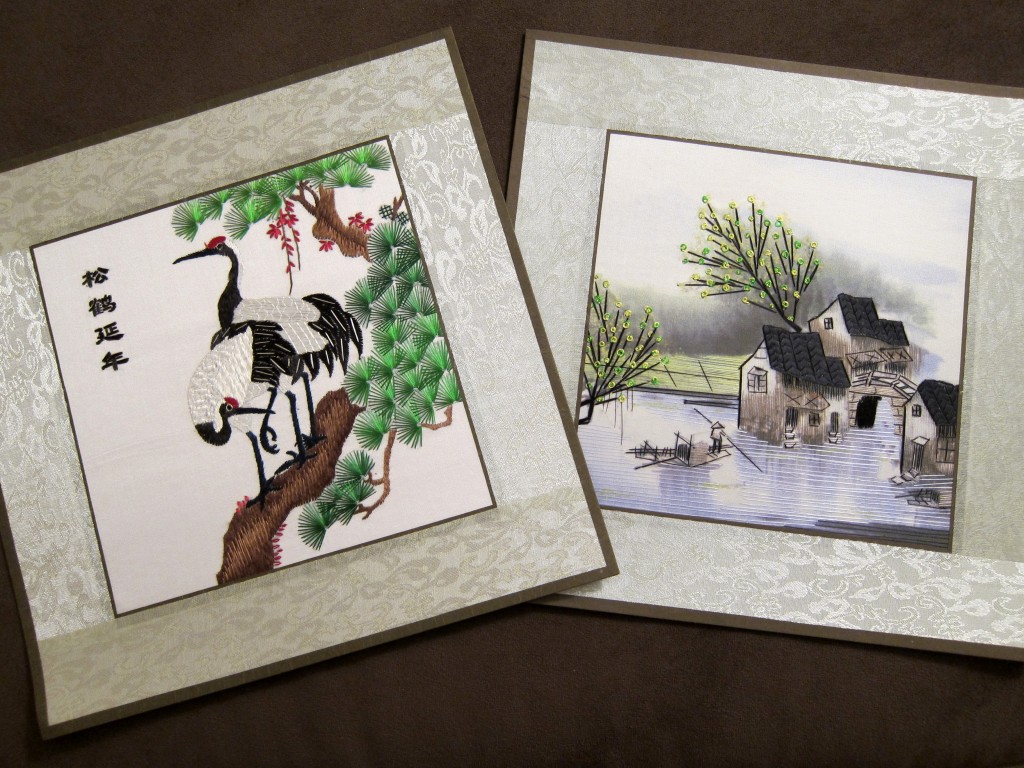
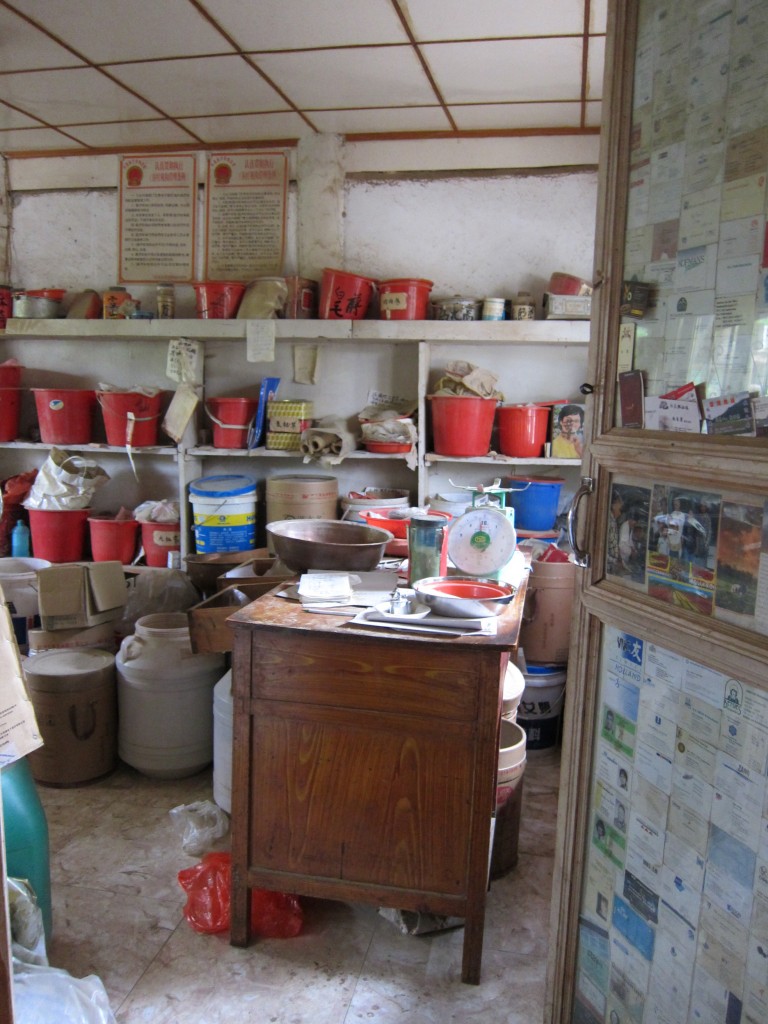
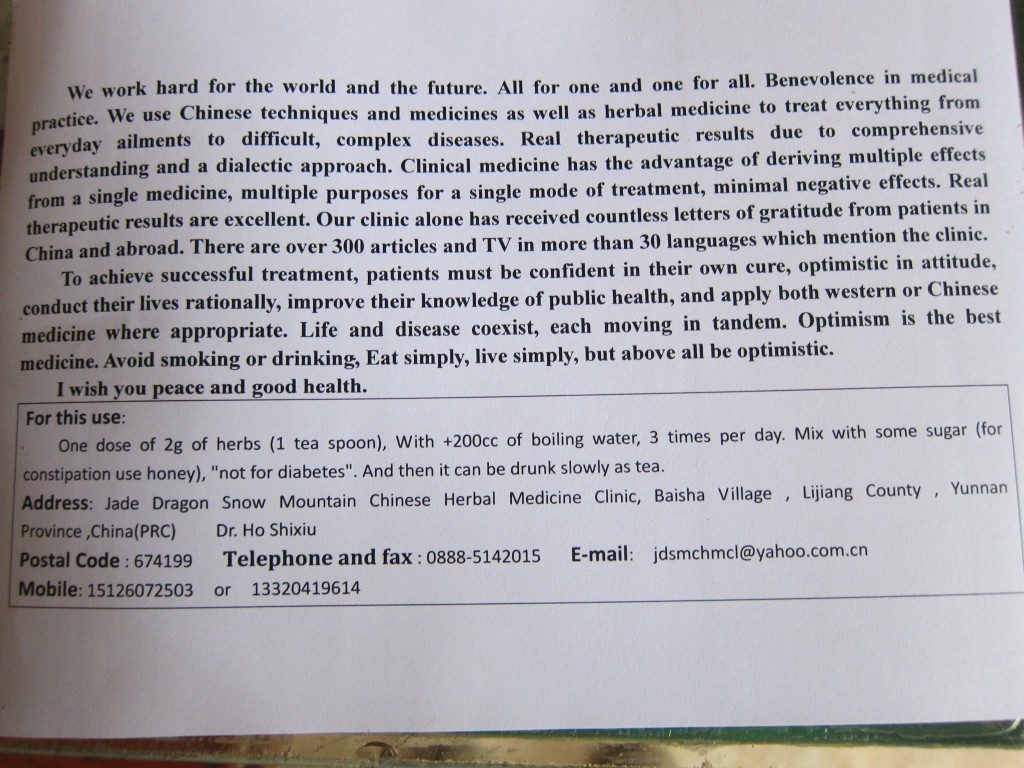
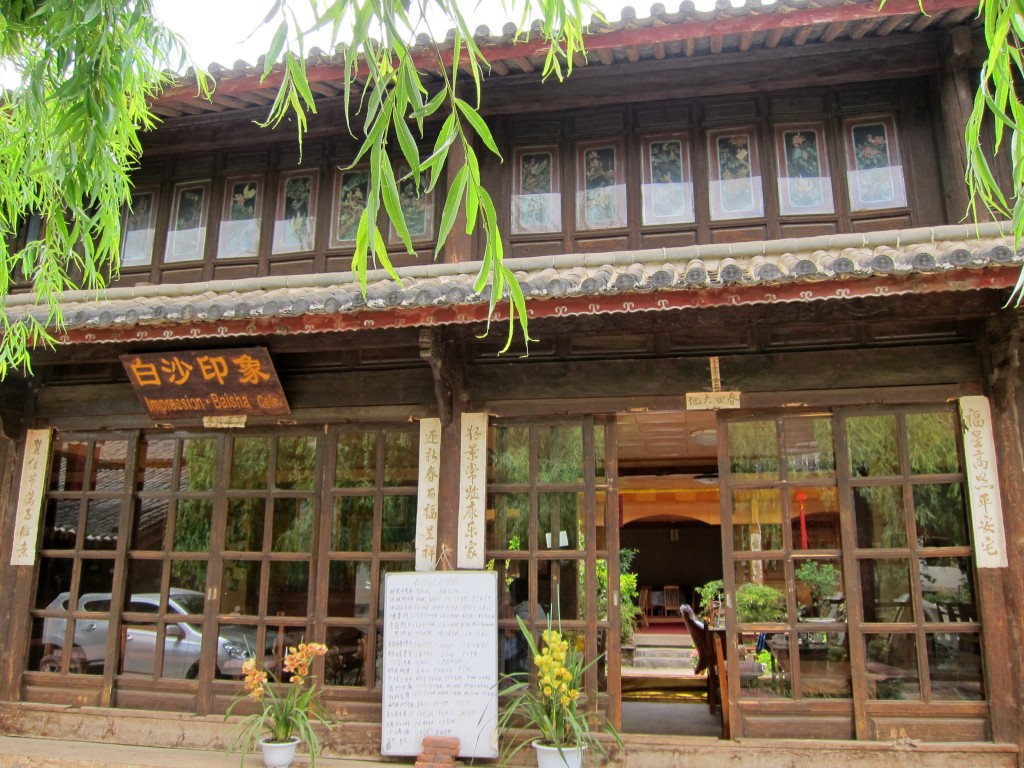
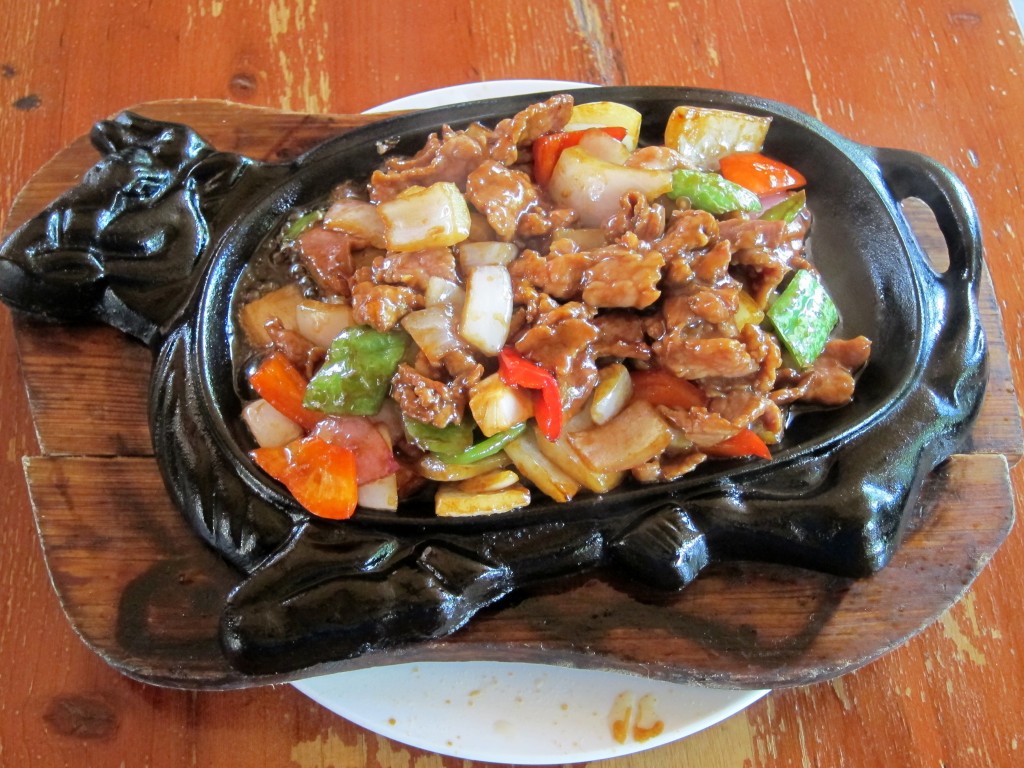
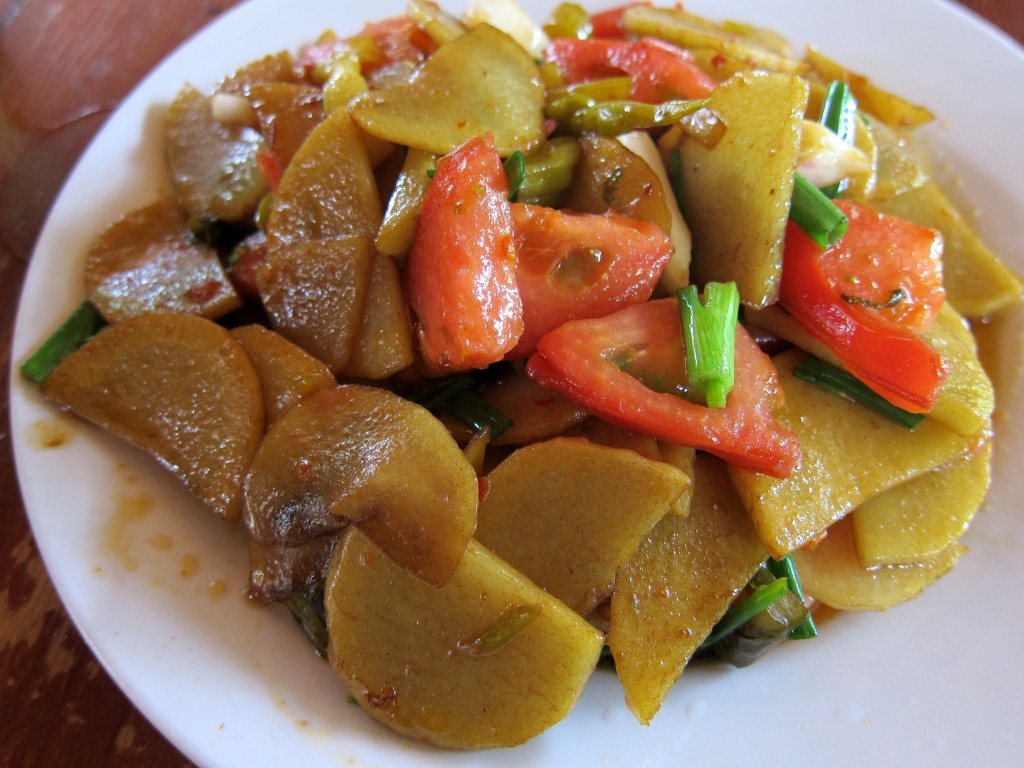
This looks like a dream destination to me! I’m happy you were able to visit after the disappointment of Lijiang. I’d guess that many places like this eventually succumb to change, i.e. what they think appeals more to tourists. Ironic that many visitors are looking for the authentic.
We LOVED this little village and spent half a day poking into the shops and soaking up all the charm. This place definitely made up for the disappointment of the day before. We almost went back to Baisha to eat at that restaurant again!
Oh, and I like Dr Ho’s philosophy!!
Isn’t he the cutest? 🙂
I would have loved wandering around this quaint village. The women on the steps and the Dr. are adorable. The food looked good too. I would have enjoyed the silk school, it reminds me of the one we went to last year in Suzhou. Kicking myself for not buying more silk items there. Again, great pictures!
I can see you sitting on the steps and laughing with those ladies!
I just read your post on Lijiang and was thinking I really enjoyed Lijiang what a shame you did not enjoy it. I was thinking that the Baisha Village was one of the highlights of Lijiang but maybe I was not as impressed with Lijiang but with the other things I saw when I was staying there. I really enjoyed the bike ride and visiting Baisha Village.
Did you also visit the Black Dragon Pool Park and Yulong Xueshan (Dragon Snow Mountain) which are things I associate with Lijiang?
That’s a good point Keith, we enjoyed the area around Lijiang very much just not the old town itself. We spent five nights in Shuhe Village which was very charming. We took the bus to Lijiang Old Town so for me it was a separate destination. We didn’t visit the Black Dragon Pool, though I’m kind of regretting it now. The manager at our guest house talked us out of it because it was so expensive and she didn’t think it worth the price. But we did take a pony ride in the mountains which was a lot of fun.
That is a good idea to stay a bit away from Lijiang and if I ever get back to that part of the world I will have to try it that way.
I don’t recall any cost with the Black Dragon pool but has been about 6 years ago. Snow Mountain was expensive but I had a good time. I think a pony ride in the mountains sounds like a better option.
This looks like my kind of destination – rural and filled with interesting local characters. Really enjoyed your photo essay!
Thanks! This little village was our favorite spot in Lijiang County. Those ladies selling vegetables were so friendly and that doctor – who spoke great English – was a hoot!
Being told that you look healthy and need no herbal medicine is a nice compliment from a 93 year old Chinese doctor! I would love to go there and meet him too 🙂
We thought so! He was such a funny guy. He even had us rub his arm to see how smooth and surprisingly wrinkle free his skin was!
I’d love to know if you thought 2 weeks was too long or too short. And if you’d do anything differently at all? We are thinking of doing a similar trip next year but will be limited to 10 days. Your photos and stories are really compelling and I’m really enjoying reading your updates on this part of the country.
Thanks! We spent 3 nights in Shangri-la, 5 nights in Shuhe Village just outside of Lijiang and 4 nights on the lake in Dali. If we had it to do again, we’d spend one less night in Shuhe and add 3 nights in Xishuangbanna. That’s an area in the southwestern corner of Yunnan touted as being a little slice of Thailand, and when we saw the flight on the board at the Dali airport we wished we were on it. But in your case, I think 3 nights in Shangri-la and Dali and 4 nights in Lijiang would be enough. We had extra days built in for bike riding and relaxing. It was really cold in Shangri-la so next time I would spend a little more money for a hotel with heat. This is something we just assumed we’d have, but apparently is a rare luxury. Also, most places in Shangri-la close from Nov 30 to April 1. We like the route we took as it got warmer as we went along. Let me know if I can answer any more questions!
What an interesting experience! This is definitely part of China that I want to see. You’ve inspired me to make an effort to go!
You definitely should! We really loved Yunnan and this little town was one of the highlights of our trip.
“Optimism is the best medicine” – I like it!
It is certainly working for him! 🙂
I need to get there once I’m back in China from Macau. Love this village. Very charming area with those cheerful locals. I have visited many medicine men in China and they are all very knowledgeable. They often make some herbs for me to stay young and fit :).
While I was happy he deemed me “healthy,” I was a little disappointed not to get an interesting prescription from him! There are so many special regions in China and this is definitely one of my favorites so far. I hope you get to see it!
Those dishes look delicious!
Oh, they were! Fortunately, Shanghai has a few great Yunnanese restaurants so I won’t have to go long without eating them again 🙂